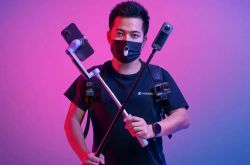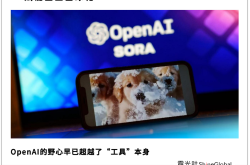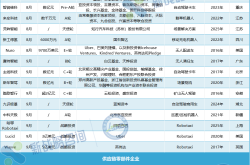Sora Post-Analysis: From AI Tool to AI Platform, Industrial AGI Takes Another Step Forward
![]() 10/17 2025
10/17 2025
![]() 424
424
The tool era for video generation is fading, while the platform era is emerging. Over the next decade, whoever first establishes a complete 'generation-editing-distribution-monetization' pipeline will own not just a viral platform but the engine of the next-generation content industry. From a broader perspective, this represents a first-mover advantage in true AI platforms, extending beyond content.
Author | Dou Dou
Editor | Pi Ye
Produced by | Industrial Insight
AI video is once again trending thanks to Sora, but this time the focus extends beyond technical advancements to its potential for reshaping business models.
On September 30, OpenAI officially launched Sora, a new short video social app featuring a vertical video feed interface. It supports horizontal scrolling to view multiple versions of content generated from the same prompt. Users can create up to 10-second surreal videos with sound via text prompts, with all content AI-generated and uploading from mobile galleries prohibited.
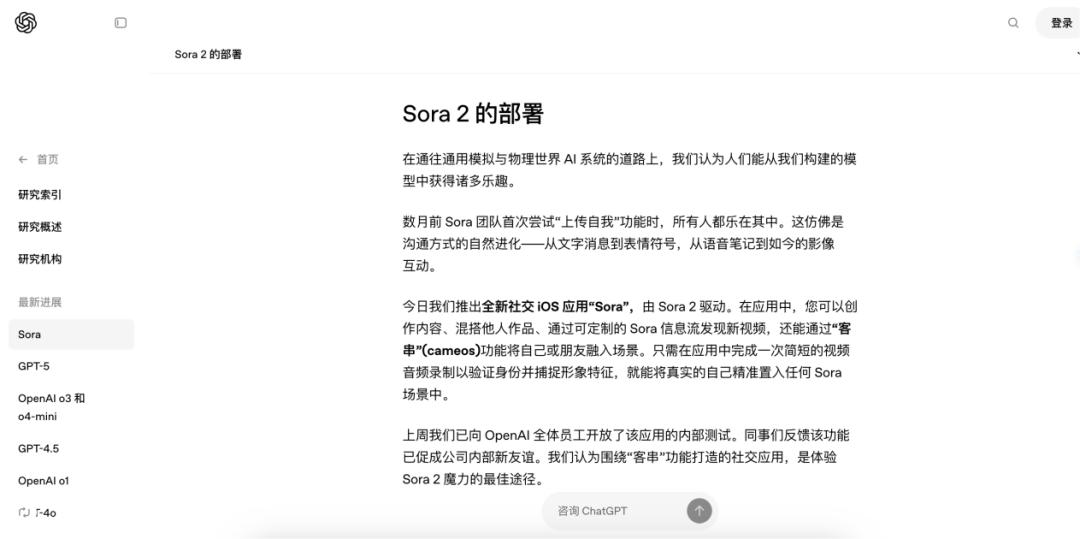
Initially free, Sora App offers basic computing power to regular users. OpenAI plans to provide APIs to developers soon, further expanding the ecosystem.
Sora is building a 'video Feed' interface, resembling Douyin's (TikTok) content stream, signaling a shift: AI video competition now centers on ecosystems rather than algorithms. Key questions include: Who controls larger content entry points? Who dominates the underlying computing and distribution layers? Who can integrate the full 'generation-editing-distribution-monetization' chain?
The tool era for video generation is fading, while the platform era is emerging.
This mirrors GPT's evolution to ChatGPT—when technology embeds into platforms, entire industry value chains are redefined.
The critical question today isn't whether AI can make films but who can transform AI video from a tool into a new production platform. For domestic AI video platforms, where do opportunities lie in this wave?
The framework for industrial AGI is accelerating toward us.
I. The End of Tools: Bottlenecks in AI Video
In February 2024, an AI video of a woman strolling through Tokyo streets by Sora ignited the AI community, making AI video a hot track (track). Within months, domestic players like JIMENG AI and KLING followed, catching up faster than expected. Today, Chinese video generation models rank prominently in global evaluations.
For example, Volcano Engine's Seedance 1.0 topped the AGI-Eval Global Text-to-Video AI Model Rankings, while Gen4 fell to the bottom.
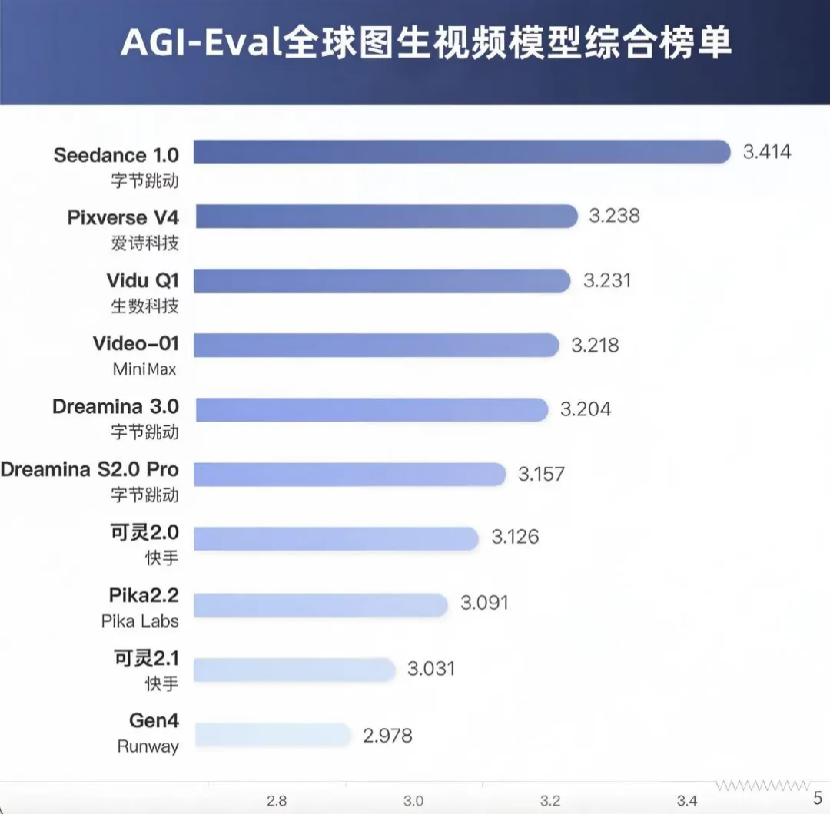
In SuperCLUE's July 'Global Text-to-Video Large Model Rankings,' MiniMax, ByteDance, and Kuaishou secured top-five positions.
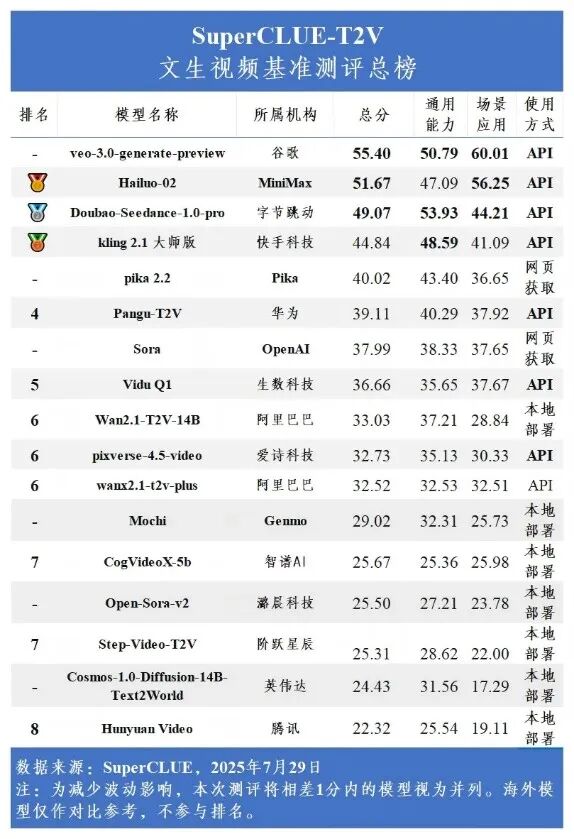
Over the past year, AI video's iteration speed has outpaced most verticals. Global AI video generation market size exceeded $5 billion in 2024, projected to grow explosively at over 120% annually by 2026.
'One-click video generation' is no longer a dream. Yet, questions linger: Where do these videos go? Who uses them? How do they integrate into workflows? Most AI video products remain demo-stage. Ten-second clips may impress on social media but fail to embed into standardized production systems for film, e-commerce, or advertising.
Take filmmaking: from storyboarding, characters, and art to shooting, lighting, and compositing, over a hundred steps are involved. AI tools typically address one link (link), like generating concept art or scripts, but lack integration into collaborative systems. AI becomes a highlight, not a production cornerstone.
Cost is another hurdle. High-quality video generation costs $30–50 per minute. Even optimized solutions like Volcano Doubao and KLING remain expensive for bulk production. Film studios often find hiring a skilled 3D team more cost-effective.
Efficiency hasn't improved either. Editors become prompt engineers, spending hours debugging models. AI video serves as inspiration, not a production tool, hindering scalable commercial reuse. It remains a resource-intensive, low-retention tool rather than a lightweight productivity solution for millions of creators.
The third bottleneck is ecosystem fragmentation. Video generation is just the start; distribution and monetization hold real value, yet most AI video tools lack these links.
Take Sora: users can generate videos quickly but must export, transcode, and re-upload to platforms like Facebook or Instagram. This disrupts content flow, fractures creator experiences, and reduces retention.
AI tools create videos but fail to 'activate' them in content ecosystems. The tool ceiling becomes apparent.
Overall, tool-based AI products excel at one-time content generation but fail to enable sustained production.
True adoption requires a natural loop of creation, distribution, deployment, and feedback. Hence, Sora shifts focus from model upgrades to building a Feed, as only platform mechanisms enable AI content circulation and reuse, turning it into genuine productivity.
In this race, whoever first integrates the full chain from generation to industry will define the next content platform.
II. Two Paths: Model Ecosystems vs. Content Ecosystems
China and the U.S. are taking divergent paths to integrate AI video into industries.
Overseas players like OpenAI, Runway, Pika, and LumaLabs adopt a 'model + API + community' approach. Their core isn't applications but a reusable foundational capability system.
Models are their key assets. Sora2 relies on GPT-5-level multimodal computing and video reasoning networks; Runway's Gen-3 Alpha acts as a 'development framework' for video generation, allowing developers to call interfaces, customize scenarios, and output plugins; Pika rapidly accumulates user materials and prompt templates via community mechanisms, feeding back into model optimization.
The logic is clear: first master foundational capabilities, build technical barriers through closed computing and model interfaces; then open APIs to attract developer ecosystems, creating network effects; finally, construct platform networks driven by community prosperity.
Sora is dubbed the 'GPT of video' for following this path—models become platforms, which in turn refine models. Developers and users co-train models, forming a self-evolving ecosystem.
Yet, challenges abound: commercialization is slow, and industry adaptation lags. Models excel at general capabilities but struggle with specific content circulation. They build competence but not scenarios.
In contrast, Chinese vendors take an application-driven approach.
Kuaishou's KLING, Volcano Engine's Doubao Video, Tencent's Hunyuan Video, Baidu's Wenxin Video, and MiniMax aim for direct adoption in advertising, e-commerce, film, and social media—not just showcasing model prowess.
For example, KLING targets 'video + e-commerce,' generating product clips for Kuaishou merchants; JIMENG AI integrates with Douyin's creation platform for one-click distribution; Tencent's Hunyuan Video focuses on semi-automated IP content and film advertising.
Their shared trait: prioritizing AI video integration into production workflows over mere demonstration.
This logic is content-driven, not model-driven. Computing power and model capabilities can be outsourced or co-developed, but content entry points, distribution channels, and user relationships form the true platform barriers.
Chinese vendors' breakthrough lies in embedding AI video into industrial circulation chains, enabling content visibility, consumption, and monetization. This divergence shapes platform value: one as content infrastructure, the other as content production pipelines.
Ultimately, both paths must answer: How to make video AI 'usable, scalable, and sustainable.' Which path reaches this goal faster?
Answers are emerging.
By June 2025, KLING AI surpassed 1.5 million monthly active users, with consumer subscriptions contributing 70% of revenue ($100M+ monthly) and B2B API renewal rates exceeding 80%. In September 2025, JIMENG AI reached 20.37 million MAUs. Meanwhile, overseas players like Runway rely on high-net-worth clients (e.g., film studios), limiting consumer penetration. Pika's website traffic dropped 64% from its peak to 2 million visits in April 2025 (Similarweb).
Domestic content platforms' reverse-engineering approach demonstrates stronger supply integration and faster commercial closure.
III. Localization of Domestic AI Video Platforms: Opportunities, Challenges, and Strategies
Platformization is a marathon of systemic capabilities, not a sprint. For domestic AI video vendors, the battle hinges on who first operationalizes 'platform capabilities.'
A key backdrop: China leads globally in content platform concentration and penetration. Platforms like Douyin, Kuaishou, Tencent Video, Xiaohongshu, and Bilibili have established full-chain ecosystems from user education to commercialization. While overseas players debate model choices, domestic firms focus on integrating AI content into workflows.
This reshapes AI video's industrial logic: content shifts from 'generation' to 'circulation.' Generated videos can be directly distributed, promoted, and monetized, forming a closed ecosystem.
Meanwhile, demand gaps widen across verticals like brand marketing, live-stream e-commerce, IP operations, and education, where human efficiency bottlenecks persist. AI video addresses these structural pains.
Moving from 'quantity explosion' to 'quality optimization,' AI video reshapes content supply structures. Leveraging mature platform ecosystems, Chinese vendors can build new 'content industrial systems' and set global 'AI video platform standards.'
Yet, stark realities persist.
Video generation, reasoning, and rendering demand immense GPU resources, but domestic GPUs and reasoning frameworks remain immature, leading to high costs and poor scalability. Fragmented model interfaces, incompatible templates, plugins, data formats, and distribution channels hinder interoperability and cause redundant development. Unclear mechanisms for copyright and character usage in AI-generated content pose legal risks and trust crises. Without addressing these, platforms risk stalling early.
Thus, AI video platformization's true challenge lies in industrial capabilities—systemic governance and optimization across legal, standard, ecological, and cost dimensions.
Some domestic vendors are already making strategic breakthroughs to build video AI platforms with systemic capabilities.
Encouragingly, firms like KLING and JIMENG AI are leading this charge.
They're building 'plugin + template' ecosystems, enabling reusable, composable, and scalable generation capabilities. Third-party models, material library (material libraries), and effect plugins integrate into their platforms. Simultaneously, they're collaborating with cloud providers, AI chip firms, and data centers to establish distributed video rendering and edge reasoning networks, drastically cutting generation costs. They're also refining copyright and revenue mechanisms, from content watermarking and tracing to profit-sharing models, fostering clear commercial governance.
As these gaps close, platforms will evolve beyond tool extensions into new content industrial infrastructures, reshaping content chains.
IV. The 'Content Industrial Revolution' Rewritten by AI Video
AI video is reshaping not just content production but the entire industry's foundation—from creation and distribution to organizational structures.
China's content industry faces growth ceilings: labor-intensive creation, high video production costs and long cycles; mismatched supply and demand, with content updates lagging algorithmic recommendations; and diminishing marginal returns in distribution and monetization.
AI video platforms address these bottlenecks. By integrating generation, editing, distribution, and monetization, they redefine industry roles: creators become content operators, defining needs and refining styles; advertisers and brands place direct orders; platforms act as 'content factories + distribution channels.'
Unified within a platform ecosystem, content industries transition from fragmented creation to collaborative systems, exponentially accelerating content flow and efficiency. The content system gains industrial, scalable, and intelligent traits. Sora's app launch, JIMENG AI's Douyin integration, and KLING's Kuaishou e-commerce ties all lay groundwork for this new production-distribution paradigm.
Notably, the mature content distribution systems formed by domestic platforms such as Douyin, Kuaishou, Tencent Video, Xiaohongshu, and Bilibili have provided a natural "hotbed" for the industrialization of AI videos.
Once AI video platforms can connect with these entry points, China's content industry will undergo a new transformation, upgrading from a "content platform" to an "industrial platform"; from "traffic distribution" to a new infrastructure for "content supply and commercial conversion"; and from "creativity-driven" to a full-link intelligent ecosystem that is "intelligence-driven + data-driven".
Such changes are already underway.
For example, Qu Ji Xiaojiang from Bona Film Group admitted in an interview that Seedream and Seedance have gradually been integrated into the film industry process. Bona now has two paths: one is "AI+", where humans and AI co-create; the other is "+AI", where AI is introduced into traditional processes to improve efficiency and reduce costs.
AI is also creating new job roles, such as AI Visual Director and Prompt Engineer. As the entire AI video process becomes interconnected, these new roles will no longer be isolated optimizations but will collaborate to upgrade the industrial structure of the entire supply chain.
In fact, over the past year, nearly all major domestic internet companies have been investing in video large models, video generation platforms, and AIGC commercial tools. They see not only the growth of the short video market but also the historical turning point where AI is reshaping the industrial structure of content.
One fact is that the content industry is about to embrace a new narrative.
In the future, creativity will no longer be scarce; good ideas will be amplified through models. The cycle from creation to launch may shift from weeks to minutes. Content will no longer be just an "entertainment commodity" but a production resource for the data economy.
Over the next decade, whoever first establishes a complete "generation-editing-distribution-monetization" chain will not only possess a hit platform but also the engine for the next generation of content industry.
From an even broader perspective, it's not just about content but also about seizing the first-mover advantage in true AI platforms.

